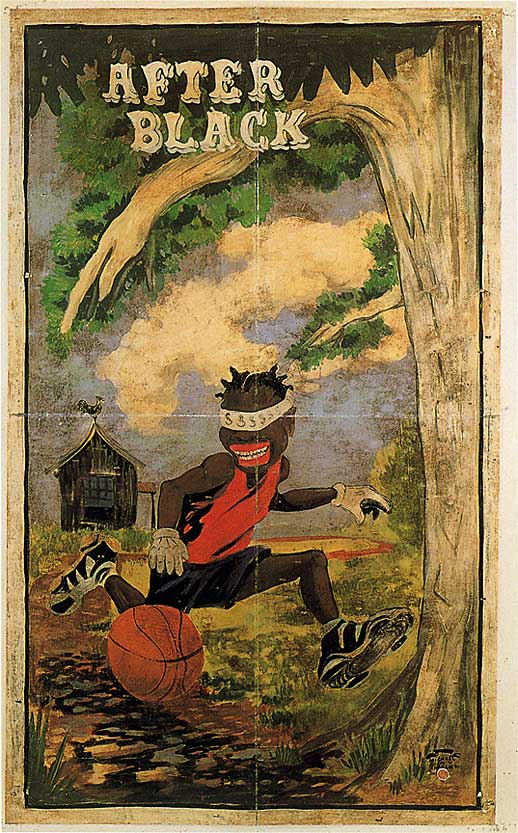Introduction
The official website of “Art in the Twenty-first Century” provides a perfect opportunity to get acquainted with contemporary artists, people of our epoch, people who live among us and have the same problems as we do but who have found enough inspiration and creativity to put these feelings and emotions so familiar to us in creative work. Though every artist presented on the website deserves appreciation, this paper is devoted to Michael Ray Charles, a man who is not afraid to expose racial and other moral stereotypes in the sphere of American advertising.
Michael Ray Charles biography
It is necessary to tackle Charles’ biography in brief as it may be helpful for interpretation of his works. Thus, Michael Ray Charles was born in Lafayette, Louisiana in 1967 (Nettles et al., n. d., para. 1). He studied at McNeese State University and graduated from it in 1985 and his major was advertising design, and he “also received an MFA degree from the University of Houston in 1993” (Art 21 PBS official website, 2007, para. 1). After earning a degree, Charles started teaching at the University of Texas in Austin and he was soon promoted to Professor starting his career in the sphere of higher education as a Lecturer. Nowadays he has his exhibitions all around America and in other countries, such as France and Belgium as well.
As for his theme of interest, it became evident during his studies at college when he was studying “advertising design and illustration, eventually moving into painting, his preferred medium” (Art 21 PBS official website, 2007, para. 1). The artist aims to investigate American history from its racial point of view using the materials of billboards, commercials, posters, and suchlike materials that reflect American mentality. The main theme of Charles’ works is a misunderstanding between people of different races and their cultures.

The painting under the title “After Black (To See or not to See)” is a poster painted with the help of “acrylic latex, stain, and copper penny on paper, 60 x 36 inches” (Art 21 PBS official website, 2007, unpaged). The painting is a part of private collection. A young Afro-American basketball-player is shown in the picture. He is blindfold, a bandage is put on his eyes and its pain feature is the signs of dollars on it. A tree is right in front of the boy but he is running with his ball and sees nothing around him.
The meaning of this painting can be interpreted with the help of his quotation: “I think that these images are just as much white as they are black. They’ve been projected and internalized” (Art 21 PBS official website, 2007, unpaged). “After Black (To See or Not to See)” is aimed at the blacks as well as the whites. On the one hand, the artist wants to warn young black men that their readiness to do anything for money is dangerous.
On the other hand, Charles aims this painting on the white people for them to understand that they used to and, maybe continue to make the blacks their subjects and their puppets entertaining them. Charles used to be a basketball player himself and he “does not hide his judgment of the sports world as another minstrel show in which black people play, white people watch” (Nettles et al., n. d., para. 6).
Conclusion
Using conclusion, it is possible to state that Charles’ paintings reveal the ill-nature of racial stereotypes and inequality of American citizens of different races. The artist mixes the past and the present, showing people the directions to act and stereotypes to break. Charles’ paintings are drawn from life and perfectly reflect it, making a viewer think about the past and the state of the moral degradation of contemporary society.
Reference List
Art 21 PBS official website. (2007). Michael Ray Charles. Biography. Web.
Nettles, L., Carcamo, L., Camarena, A., & Crespo M. (n.d.). African-American History though Arts. Michael Ray Charles. Web.